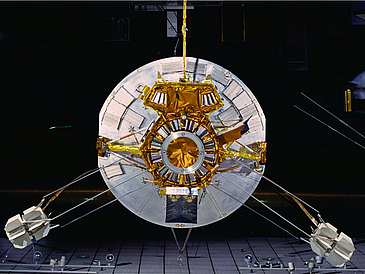This fascinating phenomenon has been puzzling research groups around the world. Since 1979 NASA has been registering a diminutive anomalous acceleration of the Pioneer spacecraft. As small as this may be, over the course of years it has led to a deviation from the calculated orbit in excess of 650,000 kilometers. Now a team of international scientists, some of them from the University of Bremen, have proven that thermal radiation – i.e. electro-magnetic waves – is the reason why the two probes have been decelerating. Apart from the effects of direct thermal radiation, they have found out that multiple reflections at different components of the craft may also be involved. Another important role in the overall computations is played by thermal radiation from the atombatteries which transform the decay heat produced by the plutonium into electricity and radiate the lost heat into space. In addition to this, the satellite emits heat produced by the electricity consumers on board. Unless this thermal radiation is sent off in all directions at exactly the same rate, it will inevitably exercise an appreciable influence on the craft’s trajectory.
Before this result could be made known, a workshop was held in Bern at which scientists from the USA, Canada, France, Norway, Italy, Great Britain, the Netherlands and Germany took part. Among them was the team led by Professor Claus Lämmerzahl from the Center for Applied Space Technology and Microgravity (ZARM) at the University of Bremen.
The Bremer research team began its extensive thermal analysis of the spacecraft some four years ago. On the basis of complex mathematical modeling in combination with data supplied by NASA, Benny Rievers, a member of the ZARM team, calculated the surface temperatures over the whole mission and was subsequently able to derive the resulting recoil forces. The results have been published at arxiv.org/abs/1104.3985


